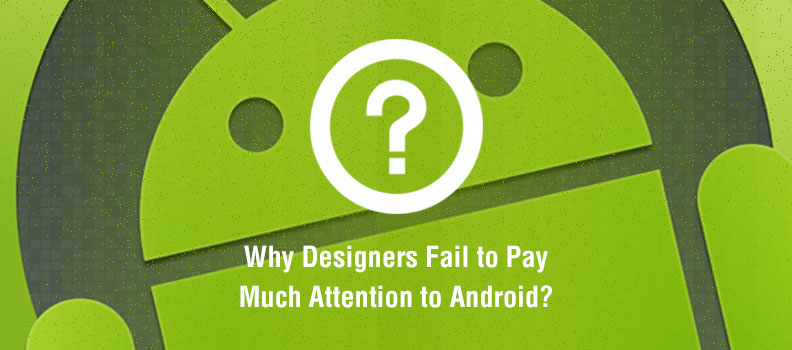Android has become a preeminent mobile platform and it absolutely seems to dominate in the budding markets. As per the research, everyday, millions of new android users are cropping up, around the world. With such a grand scale of popularity, it looks like Android will certainly rule the market for ages. Well it’s not like, there are no other mobile OSs that are so powerful but the impact which Android has made on the users is just phenomenal. Due to smooth touch inputs like tapping, pinching, swiping and also the virtual-keyboard, most of the Smartphone companies are incorporating Android platforms to enhance user-experience. The growth figures of Android are one of the essential criteria for transforming it to such a dynamic platform. Despite of setting a benchmark in technology and catching up so much fame, web- designers are just heedless about Android.
One of the best aspects regarding Android is that it functions on assorted devices and the worst aspect is that it functions on assorted devices. From the user point of view it is an appealing feature but from the designer’s point of view, it’s an appalling feature. However designers have to accept the reality that more and more devices are going to pop up that would function on Android platform and therefore it is imperative to focus on Android while designing websites. You may be in the soup while designing for Android but you need to accept the challenge to make your design up to standard.
What are designers being oblivious to the potential of Android?
Android is tricky:
It’s high time now and web-designers should understand that challenges should be welcomed with open arms rather than running away from it. Technology is making strides, every now and then and as a designer you should keep up with the pace of cutting-edge technology. The common issues with most of the designers are the landscape for android is too fluid, fragmentation is getting on nerves, UX is poor, lack of design aesthetic and so on.
We are not denying the fact that designing for Android is much tricky but you cannot overlook it. Learning device diversity has become underlying. Due to various screen sizes, you cannot design with fixed-layout for Android. You have to be skilled with responsive web designing techniques like breakpoints, fluid layout and resolution free which are quite imperative for Android design. Fragmentation is undeniably a challenge but you have to treat is positively.
User behavior varies:
Android users don’t’ shell out for apps, they don’t follow any data plans and one of the most irrelevant reason for not designing for Android is that all the designers are usually iPhone user so they are not aware of Android user behavior. This seems to be sensibly, myopic.
Users are ready to pay willingly for the apps that add true value to their lives. Reasonable data plans are also coming up in the emerging markets, so all these factors should not be the reason for ignoring Android design. As a technologically-sound professional, you have to digest the reality that you are not just designing for today, you are designing for future too. Thus you cannot fail to notice the potential of Android. Rather than evaluating on the diversity in user behavior or concluding that the competitor platform is more efficient, look into yourself and answer, are you ready to take up the challenge or are just reluctant.
It is responsibility of the designer to understand users’ need and design according to that. Besides, there is no valid reason to disregard their needs. It is not about which platform is winning but it is about the technology which is enriching our lives. Android is certainly one of the finest mobile platforms, till date and designers might risk themselves by turning blind to its power.

